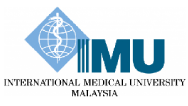PET-CT Imaging In Non-Small Cell Lung Carcinoma – A Review of Cases from A Northern Malaysia Referral Centre
Authors: Joni Bing Fei Teoh, Vikneswary Paniandi, Fadzilah Hamzah H, Mohamed Ali Abdul Khader, Li-Cher Loh.
ABSTRACT
Background: Positron Emission Tomography and Computed Tomography (PET-CT) imaging is shown to influence a decision change in managing non-small cell lung carcinoma (NSCLC). The introduction of such a facility in Malaysia is relatively recent, and its impact from its utility is currently being assessed.
Aim: In a tertiary referral centre possessing the only PET-CT facility in northern Peninsular Malaysia, we evaluated the potential roles of PET-CT in referred patients with non-small cell lung carcinoma.
Methodology: Sixty eligible adult cases with NSCLC, between September 2005 and December 2007, were retrospectively reviewed. Relevant data was collected using standard questionnaire for indications, staging of disease, and outcomes in terms of recurrence and response to prescribed cancer-specific therapy.
Results: The indications for PET-CT were: staging of a newly diagnosed non-small cell lung carcinoma (25.0%); post-operative restaging (21.7%); exclusion of recurrence or metastasis (18.3%); establishing diagnosis of carcinoma (13.3%); assessment of response to treatment (11.7%), and for surveillance (10.0%). The use of PET-CT was shown to induce a change in the staging, compared with non-PET conventional means in 69.2% of patients with newly diagnosed lung carcinoma (upstaged in 55.5%; downstaged in 44.5%) and in 65.0% of patients who underwent cancer-specific treatments (upstaged in 38.5%; downstaged in 61.5%). PET-CT detected recurrence in 62.5% who underwent the imaging to exclude a recurrence or metastasis.
Conclusion: PET-CT has affected the staging of a large proportion of our local Malaysian patients. Like elsewhere, the availability of such a facility is likely to have important influence in overall management of NSCLC in Malaysia.
Keywords: Carcinoma, Non-Small-Cell Lung; Positron emission tomography; Computed tomography; Malaysia.
Citation: IeJSME 2008: 2 (2): 23-26

